Warren Feeney – 13 October, 2015
If SCAPE 8's agenda is about normalising the experience of a newly, changing city then its timing is perfect. It may have taken a natural disaster on an extraordinary scale, but Christchurch residents and City Councillors seem to have acquired an unparalleled understanding and appreciation of the visual arts. The evidence resides in a series of recent public acknowledgement that the arts are important to Christchurch people, enriching the quality of their lives and that of the city.
Central Christchurch’s public art walkway
Peter Atkins, Antony Gormley, Fiona Jack, Hannah Kidd, Judy Millar, Nathan Pohio, Pauline Rhodes
New Intimacies
Curated by Rob Garrett
3 October - 15 November 2015.
New Intimacies in the inner city of Christchurch? While the container shopping precinct Re:Start and sections of the Otākaro (Avon) River represent some level of reprieve for visitors - and both are now complemented by the reopening of New Regent Street on the north side of Cathedral Square - chancing upon any moments of comfort or intimacy in central Christchurch is still a dauntingly unlikely possibility. Two years ago the inner city was congested with machinery primarily focused upon demolition. Now the city is defined by expansive, flattened vacant sites and the cacophony of building construction.
The decision by SCAPE Public Art for a biennial event that puts forward an argument for residents and visitors to return to the inner city and reconnect with its newly evolving cityscape is a big ask. It means negotiating locations to take in a series of artworks in the continually evolving environment of a large building site. It also requires a belief that the arts are a catalyst for well-being in a community five years on in the process of recovery. Yet, there is a sense that this may now be a reality.
SCAPE 8’s curator Rob Garrett, currently based in Poland, has considerable experience in art events with a particular interest in the relationships that are possible between the public and works of art. Planning for SCAPE 8 has seen him visit late in 2014 to get a sense of the state of the city and what might be possible. Hence, SCAPE 8 New Intimacies, a biennial that he outlines as having its origins in his visit: “Returning to Christchurch last year it was obvious how the city’s changed appearance plays tricks on the memories of locals and visitors alike. Standing in places once shaped by familiar landmarks….I wondered if SCAPE 8 public art projects could, in some modest way, help people form new, memorable and intimate connections with the fabric of the city as it is now. The artists I invited to participate have each been inspired by the same idea.”
If SCAPE 8’s agenda is about normalising the experience of a newly, changing city then its timing is perfect. It may have taken a natural disaster on an extraordinary scale, but Christchurch residents and City Councillors seem to have acquired an unparalleled understanding and appreciation of the visual arts. The evidence resides in a series of recent public acknowledgement that the arts are important to Christchurch people, enriching the quality of their lives and that of the city.
Undoubtedly, the new-found public visibility of the arts over the past five years is central to this shift in attitude. The collective response from arts organisations, working within the constraints of a city in ruin, delivering a myriad of exhibitions, installations and performances makes up a list too long to mention in all its detail, but it does include FESTA, the Christchurch Arts Festival, the Christchurch Art Gallery’s Outer Spaces programme, Gapfiller, The Body Festival, Christchurch Pops Choir, TEZA, The Physics Room’s public programme, Free Theatre, the Court Theatre, SCAPE Public Art and First Thursdays.
Often working in make-shift circumstances in vacant buildings and temporary sites, artists and arts organisations have managed to function with a surprising element of business-as-usual. The message has finally got through about the value of the arts to a city that historically, has frequently been hostile. Christchurch’s resentment towards the arts covers decades of its history; the rejection of Frances Hodgkins’ The Pleasure Garden as a gift to the city’s public gallery (1948), the refusal to accept a Henry Moore sculpture for the Port Hills in the early 1970s, controversy over the gifting of Colin McCahon’s Tomorrow Will be the Same but not as this is to the public collection in 1960, the removal of Marcel Duchamp’s Fountain from a touring exhibition in 1967, and in 2000 abuse from residents about the placement of Neil Dawson’s Chalice in Cathedral Square, followed by the rejection of Michael Parekowhai’s Cosmo McMurtry from SCAPE 4 in Cathedral Square in 2006.
Yet a change in attitude has taken place, manifest in the response from the public, journalists and City Councillors to SCAPE 8’s legacy artwork for Christchurch, Antony Gormley’s STAY, one of two works by the British sculptor to be sited in the city. Initially, its reception began like previous public discussions about art in Christchurch with a tirade of abuse posted online when STAY featured on the front page of The Press. The City Council’s contribution of $502,000 for the purchase of the work featured prominently: “over paid, out of touch idiots building monuments to themselves.” Yet within 24 hours, the response had turned around. A Press editorial argued “Public art makes the heart sing,” and columnist Cecile Meier argued that “buying art for a city severely deprived of beauty is not a waste of public money.” CEO of the Christchurch City Council Karlene Edwards commented that “public art contributed to the cultural recovery of the city,” and was supported by Mayor Lianne Dalziel.
When it opened on 2nd October, it felt as though SCAPE 8 New Intimacies did so within an environment receptive to its intentions. The inner city walk around SCAPE 8’s thirteen public artworks had its strengths with excellent decisions about the choice of works and their relationship to site well-considered.
However, doubts have been expressed around some of SCAPE 8’s decisions and its top-down attitude in the invitation to artists from outside the city to participate in a programme that is specifically centred upon the well-being of a local population. It is difficult however, not to see this response as essentially provincial. Looking at highlights such as Gormley’s STAY, Peter Atkins’ Under Construction - Chaos and Order, and Nathan Pohio’s Raise the anchor, unfurl the sails, set course to the centre of an ever setting sun!, as public artworks by British, Australian and Christchurch-based artists these all reveal appropriate and meaningful responses to the city. They also reveal the experience and credibility of Garrett as curator of public art projects and arts events.
As a work by internationally renowned sculptor, Antony Gormley, STAY inevitably faces high public expectations. Certainly anyone anticipating a large-scale or dramatic work by the artist may initially be disappointed. Yet, although only recently located in the Ōtākaro (Avon) River STAY has almost immediately established a welcome presence in what is essentially a pastoral setting. Undoubtedly, it would be good to see its metal base in the river buried to sustain the illusion of its reality as reflective standing figure soothed by the flowing water around its feet, but the scale and materials of Gormley’s polyhedral figure animate its surfaces in a way that makes it a new and positive experience each time it is encountered.
Atkins’ Under Construction - Chaos and Order, located on Gloucester Street may be in close proximity to STAY but is a quite different experience as a large-scale billboard in an expansive and vacant site, anticipating reconstruction. Atkins has reworked industrial road signs prominent throughout Christchurch, with their orange and white messages adopting the spirit of a formalist abstract painting, perfectly integrated and at one with its surrounding environment.
Pohio’s Raise the Anchor, unfurl the sails, set course to the centre of an ever setting sun! is a surprisingly cinematic image of Māori leaders on horseback with Lord and Lady Plunket appropriated from the Canterbury Times (1905), scaled up and relocated to the Ōtākaro (Avon) River bank. In its procession of figures it is difficult not to think of widescreen Cinerama movies like How the West was Won (1963). Again, it is a public artwork thoughtfully located with all its participants facing - on one side - towards the activity of the rebuilding of Christchurch. The associations between the speculation and expansion of the American west in the mid-19th century (like a wild frontier township in a volatile state of development) and the current state of Christchurch are palpable.
Pauline Rhodes’ Mobile Tangles are installed in three sites in the city and also seem right at home. Rhodes has made use of familiar building and road repair materials - water hoses, pre-cast concrete boxes and trailers - giving due attention to the qualities of surfaces and patina. An underlying theme in this work and in SCAPE 8 in general, the Avon River is the point of origin for the city as a site for water and food gathering. Such ideas are fundamental, with the artist also drawing attention to the presence of a waterway infrastructure beneath the ground that will see the blue-coloured hosing re-used as originally intended when New Intimacies comes to an end.
SCAPE 8 conveys a strong sense that the participating artists have all sought to see their work integrated into the current realities of the city. Of course, art isn’t real life, so there is equally an inevitable tension between ideas and outcome. In Ōtākaro Plant Parade, Fiona Jack has constructed a series of banners referencing Christchurch’s history as garden city, spending “time in Christchurch talking with people and learning about ecological stories and histories of the Garden City.” A parade with residents holding the banners took place along the banks of the Avon River on SCAPE 8’s opening day. Jack’s commitment to Ōtākaro Plant Parade clearly resided in its potential for public participation, delivering on SCAPE 8’s intentions to generate new relationships between residents and the developing city.
Yet, the banners also have an afterlife, currently displayed in the foyer of the Ibis Hotel as “documentation.” Of all the sites for public artworks this seems like the least successful. The banners are displayed close together, fitted between panels, furnishings and a reception desk. It may sound unfashionable to accord too much attention to the credibility of art objects in the space of a gallery but Jack’s banners are beautifully resolved works and, on this occasion, would have benefited from the purity of the white-cube space of a gallery - spot lighting with all the accompanying trappings and atmosphere of self-constructed importance.
Equally problematic is Judy Millar’s Call me Snake on the corner of Armagh and New Recent streets. Drawing from the premise of a children’s pop-up book, Call me Snake is cornered by its location. Set in a constrained space and butting up close to an adjacent building, it looks out upon an expansive vacant site. It seems vulnerable and awkward, and in attracting visitors to the site, raises the question as how to find certainty and comfort in this public space. It works best viewed from the distance of the Gloucester Street entrance to New Regent Street as a welcoming introduction to this retail precinct.
These works raise questions about the way in which any ‘new intimacies’ might be possible for those returning to the inner city as construction site. (It should be noted that such intentions were always going to be demanding with a curator not in daily contact with Christchurch, even though Garrett did qualify his promises of reconciliation within the context of his curatorial statement. He “wondered if SCAPE 8 public art projects could, in some modest way, help people form new, memorable and intimate connections’ with the city.” That is, there was no guarantee that this would happen.)
Of course, public art’s role as a means of well-being implies a particular way of responding to the arts. But does this suggest that it also closes down other opportunities for engagement? For many, this question was raised by Garrett’s decision to include a series of four sculptures by Hannah Kidd, Avonside Drive, located in the Re:Start Mall. As a contemporary public art programme it could be seen as representing a radical departure for SCAPE. The four individuals in Kidd’s work: Mrs Parsons, Tanya Brown, Timothy Stableman and Noel Peterson represent “everyday heroes based on people Hannah Kidd witnessed in the Methven and Christchurch communities offering gestures of kindness, following the Christchurch earthquakes.”
Impressive in their conception and construction Kidd’s sculptured figures consistently amaze in their sense of life and animation. Part of this success resides in her ability to capture the reality of the moment in time that each figure represents, whether mowing the lawn, watering the garden or peeking through the blinds to check on the neighbours. Yet, their success also points to their limitations. Kidd’s sculptures tend to deliver accessible one-liners rather than complex and subtle ideas that endure sustained viewing and returning to. Yet, in fairness to the artist and SCAPE 8, these works are also temporary installations and, from this perspective, are well-suited to the programme for New Intimacies.
The merits and questions around all the artworks in SCAPE 8 highlight issues that artists and all arts organisations will inevitably have to confront going forward in Christchurch. If there is a new commitment to the arts, to what extent are arts organisations and artists required to address, challenge and satisfy the immediate and obvious needs of communities?
Unfortunately, there are already too many artworks in public spaces in Christchurch placed there with the best of intentions that have quickly worn out their welcome. The large-scale ballet dancer on the wall of the Isaac Theatre Royal and Regan Gentry’s Wood for the Trees on High Street and Tuam Street are only two examples.
If there is a shift in thinking around the arts, then there is a real need for more informed planning required by all parties about their future in the city. October 2015 does feel like an important moment for the arts in Christchurch - one whose best outcome would be to see working artists in the city capitalising and benefiting from in the long term.
Warren Feeney
Recent Comments
John Hurrell
Here's another review of SCAPE 8 by Keir Leslie. http://pantograph-punch.com/post/ruining-the-fun
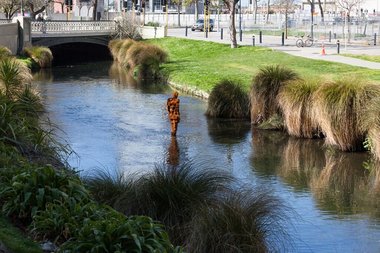

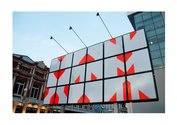
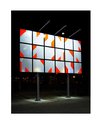


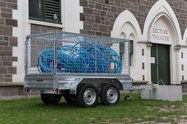
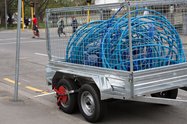

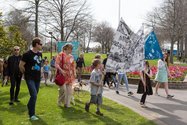


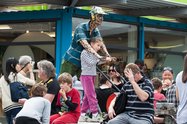
 Two Rooms presents a program of residencies and projects
Two Rooms presents a program of residencies and projects Advertising in this column
Advertising in this column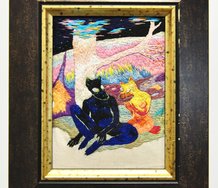
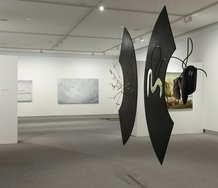
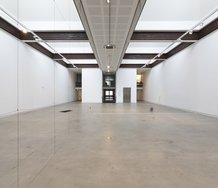

This Discussion has 1 comment.
Comment
John Hurrell, 11:59 p.m. 15 November, 2015 #
Here's another review of SCAPE 8 by Keir Leslie.
http://pantograph-punch.com/post/ruining-the-fun
Participate
Register to Participate.
Sign in
Sign in to an existing account.